November 8, 2013
Air Date: November 8, 2013
FULL SHOW
SEGMENTS
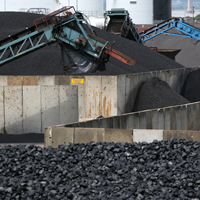
Fossil Fuel Subsidies Under Fire
View the page for this story
A new report from the Overseas Development Institute finds more than $500 billion in subsidies go to fossil fuel industries world wide each year despite pledges to phase them out. Joe Aldy, professor of public policy at Harvard University, tells host Steve Curwood that eliminating subsidies for fossil fuels will be a top agenda item at the UNFCCC meeting in Poland. (05:45)
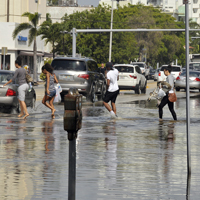
Obama Goes Local With Climate Action
View the page for this story
President Obama recently issued an executive order aimed to help US communities adapt to climate change. The president tapped governors, mayors and tribal leaders for a task force to advise the federal government on how to improve localities' resilience. Host Steve Curwood talks with task force member, Kristin Jacobs, mayor of Broward County in Florida. (05:20)
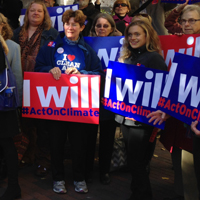
Anti-Carbon Pollution Rally
/ Emmett FitzGeraldView the page for this story
The EPA plans to roll out revised power plant emissions standards before President Obama leaves office, so is holding public hearings in cities around the country. Living on Earth's Emmett FitzGerald reports from a citizen's rally outside the EPA office in downtown Boston. (05:30)
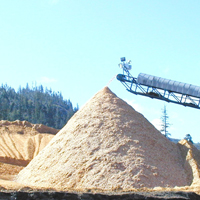
Coal Plants Burning Wood
View the page for this story
Carbon sequestration technology is still experimental, so coal burning power plants are looking for other ways to lower fossil fuel emissions to meet proposed new EPA standards. David Nicholls of the National Forestry Service tells host Steve Curwood about a solution using a renewable resource: burning wood along with coal. (05:15)
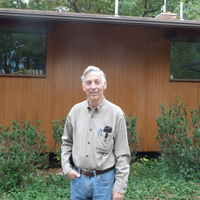
Power Shift - Generating Community Solar Power
/ Bobby BascombView the page for this story
Some roofs are oriented the wrong way or shaded by trees, making it impossible to install solar panels. But as Living on Earth’s Bobby Bascomb reports, some residents in rural Massachusetts have worked out a novel way to install their solar panels some distance away from their homes. (10:45)

BirdNote ® Whooping Cranes
/ Michael SteinView the page for this story
Whooping Cranes are the largest and most endangered of US wading birds. In the fall, small planes track their migration as they stop off at the Platte River in Nebraska, as Michael Stein reports for BirdNote. (02:20)

New Protection For Blue Fin Tuna
View the page for this story
The bluefin tuna population in the Atlantic is protected, but they are are still caught accidentally by long-line fishermen. Carl Safina of the Blue Ocean Institute tells host Steve Curwood new conservation proposals from the National Marine Fisheries Service aren't tough enough to protect the population. (06:05)

Beyond the Headlines
View the page for this story
Peter Dykstra, publisher of the Daily Climate joins host Steve Curwood to discuss some environmental stories from beyond the headlines, including pesticide use on marijuana fields and NSA spying at international climate meetings. (05:25)
Show Credits and Funders
Show Transcript
Host: Steve Curwood
Guests: Joe Aldy, Kristin Jacobs, Peter Nicholls, Carl Safina, Peter Dykstra
Reporters: Emmett Fitzgerald, Bobby Bascomb, Michael Stein
[THEME]
CURWOOD: From Public Radio International, this is Living on Earth.
[THEME]
CURWOOD: I’m Steve Curwood. As the latest round of the UN Climate talks get underway in Poland, there's a renewed focus on cutting the half a trillion dollars worth of subsidies the world gives to fossil fuels.
ALDY: They are win-win kind of actions to address climate change. You can reduce your emissions of greenhouse gases, and there's a variety of economic analyses that suggest eliminating these subsidies would help developing countries grow faster.
CURWOOD: Also, unanticipated problems get in the way of rooftop solar panels.
ROBBINS: We built our house in 1988. In fact, I spent many hours, many days making sure it was perfectly sited so that it would be suitable for solar when the time came. What I didn’t take into account was that trees grow.
CURWOOD: We'll have the solution and more this week on Living on Earth. Stick around.
[NEWSBREAK MUSIC: Boards Of Canada “Zoetrope” from “In A Beautiful Place Out In The Country” (Warp Records 2000)]
ANNOUNCER: Funding for Living on Earth comes from Stonyfield Farm, makers of organic yogurt, smoothies and more.
Fossil Fuel Subsidies Under Fire
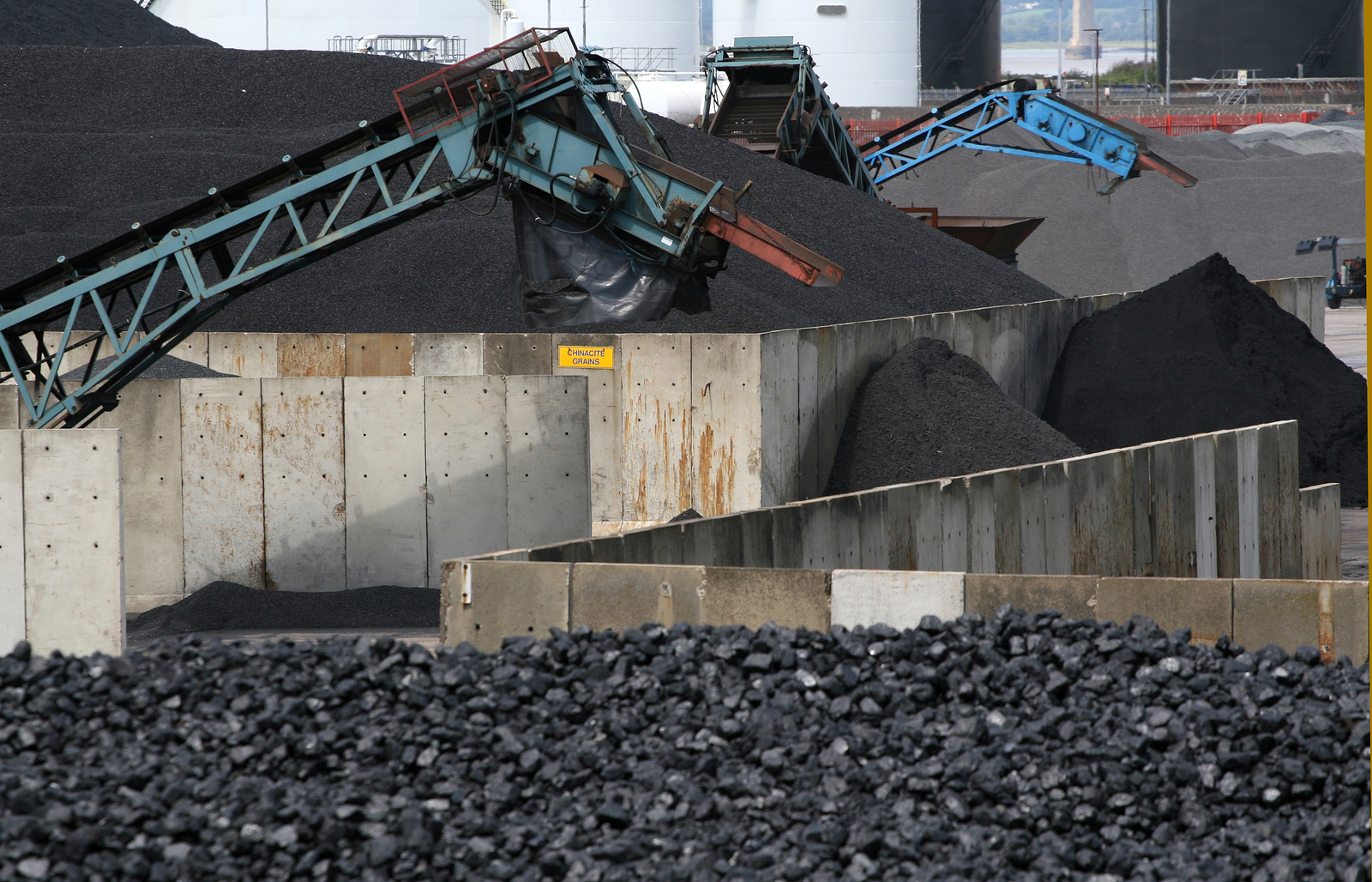
The coal industry enjoys billions of dollars in subsidies when externalities like pollution and health effects are taken into account. (Bigstockphoto.com)
CURWOOD: From the Jennifer and Ted Stanley Studio in Boston this is Living on Earth.
I’m Steve Curwood. This year’s meetings of the UN's Framework Convention on Climate Change are getting started in Warsaw, Poland, with a new strategy for reducing greenhouse gas emissions on the table. The aim is to link the climate treaties to pledges made in 2009 by the G20 group of nations to eliminate subsidies for fossil fuels. It's big money.
A new report from the Overseas Development Institute in London pegs these subsidies worldwide each year at more than half a trillion dollars, and the argument is that unless fossil fuel subsidies are eliminated there can be little chance of reducing global warming emissions. To help us understand how this might work we turn to Joe Aldy, a former White House staffer who now teaches at Harvard’s Kennedy School. Welcome back to Living on Earth, Joe!
ALDY: Thank you, Steve. It's a pleasure to be here.
CURWOOD: So talk to me about this. A half a trillion dollars of subsidies around the world?
ALDY: That’s a lot of money. We see, in many countries, developed and developing, where the government either supports the extraction of oil and gas and coal, and effectively helps lower the cost for the companies that are going to take that activity, or especially the developing countries, where they suppress the price of gasoline, diesel, electricity and natural gas, so as a result we see consumers benefit from this. It tends to be disproportionately the wealthy consumers in these countries. They consume more energy than lower income households, and there’s been work by the International Monetary Fund suggesting that 40 percent or more of these subsidies accrue to the wealthiest individuals in these countries.
CURWOOD: Now which countries hand out the most money in terms of fossil fuel subsidies?
ALDY: So we tend to see countries that are large energy producers and large energy exporters are the biggest supporters of fossil fuels. So traditionally Iran headed the list. In 2008, they had fossil fuel subsidies of $100 billion dollars. They finally realized they couldn’t keep subsidizing to that extent, and they’ve since undertaken some reforms. But even large countries in the developing world like China and India have subsidies that are on the order of $20 to $30 billion dollars each year.
CURWOOD: Now I’ve read in some of these reports that in some countries the spending on fossil fuel subsidies can rival or even exceed the amount that’s spent nationally on services like health care.
ALDY: There’s some evidence that these countries spend so much to keep the prices of fossil fuels low, that they have fewer resources to dedicate for public health or for education. For example, in 2008, Indonesia spent $1 out of every $5 in its budget just to subsidize fossil fuels.
CURWOOD: And how do we do this in the United States?
ALDY: So in the United States there’s really three tax breaks that represent the vast majority of the benefits, and they go to oil and gas producers, and they effectively lower the cost of investing in a new well to bring oil or gas to the surface.
CURWOOD: And what about coal?
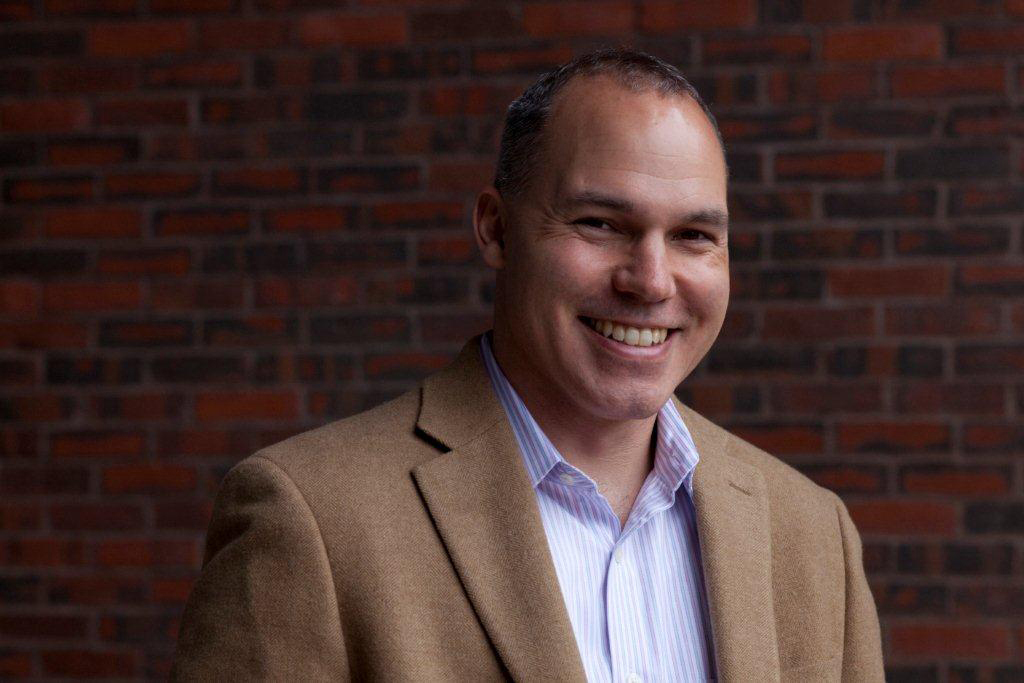
Joseph Aldy is a professor of public policy at Harvard University. (Harvard University)
ALDY: Coal receives some tax breaks as well. On a dollar value through, it’s less than 10 percent of our total fossil fuel subsidies in the U.S. Having said that, our failure to fully address the pollution consequences of coal can be quite substantial. The fact that we don’t fully address the impacts of burning coal on lower air quality, the impacts on hospital admissions, as well as premature mortality, is an implicit subsidy for coal.
I should note this year that earlier this year the International Monetary Fund, when they produced their estimate of fossil fuels subsidies, they had two kinds of estimates. One that reflects what I’ve described here in terms of tax expenditures and the benefits under the tax code, then this other one that includes the external public health cost. If we do that, US subsidies and fossil fuels go from $4 billion just taking into account the tax code benefits to according to the IMF almost $500 billion by itself.
CURWOOD: Whoa!
ALDY: So when start to account for the pollution consequences on health, the numbers get really really big.
CURWOOD: What’s the world number on that, do you know?
ALDY: We’re now talking into a couple of trillion. I think it’s real money then.
CURWOOD: So the G20 countries have committed to eliminate subsidies. There’s no timetable. At the negotiations on the climate treaties, they’re talking about trying to put a timetable there to eliminate them by 2020. How much of a game-changer would that be do you think for international climate negotiations, if that were accomplished?
ALDY: I will say from my experience from 2009, this will be tough. The United States tried to push for an explicit timetable for eliminating fossil fuel subsidies, and while there was consensus that this is a desirable objective, there was disagreement on what’s the appropriate timeframe.
Focusing on fossil fuel subsidies can be something that’s really an important part of these negotiations. I think for developing countries, it’s identifying first steps they can undertake that mitigate emissions, and I think appealing, or potentially appealing, to countries because they are win-win kind of actions to address climate change. You can reduce your emissions of greenhouse gases, and you can deliver economic benefits by reducing these subsidies. It allows for a smarter, more efficient allocation of your resources in your economy. There’s a variety of economic analysis that suggests eliminating these subsidies would help developing countries grow faster, but I think part of this gets to how we define subsidies.
So, for example, Saudi Arabia has subsidies, according to the International Energy Agency, on the order of about $60 billion in 2011, and yet Saudi Arabia, when they report it to the group of 20 process in evaluating subsidy reform, said they had $0 worth of subsidies. So the challenge right now, I think, is to try to increase the information, increase the transparency, and add onto that accountability. But I think negotiating that, as for that matter, negotiating anything in the climate talks now, will be tough.
CURWOOD: Joe Aldy teaches at the Kennedy School of Government. Thanks for coming by.
ALDY: Thank you, Steve.
Related links:
- A paper by Prof. Aldy on eliminating fossil fuel subsidies.
- Overseas Development Institute report on fossil fuel subsidies
- Greenpeace paper on fossil fuel subsidies submitted to the UNFCCC
- United Nations Framework Convention on Climate Change
Obama Goes Local With Climate Action

South Florida is particularly vulnerable to flooding as a result of the predicted sea level rise from climate change. (bigstockphoto.com)
CURWOOD: President Obama is taking what steps he can to address carbon pollution without the support of Congress. Back in June, he launched the federal Climate Action Plan that aims to cut emissions and prepare US communities for the impacts of a changing climate. And now he's tapped governors, mayors and tribal leaders to serve on a task force to consider how best to support localities and add to their resilience. One of those chosen for the task force is Kristin Jacobs, Mayor of Broward County in South Florida. Welcome to Living on Earth!
JACOBS: Thank you so much.
CURWOOD: And congratulations on your presidential appointment.
JACOBS: Oh, it’s wonderful, it’s actually one of the most exciting things that’s happened to me in all the time I’ve been in public office. There’s an old expression that says, if you’re not at the table, you’re on the menu. And often, local governments, we feel that way, so it’s just awesome to be at the table, on the federal level, and to be able to help in deciding some of these issues and where funding goes and what the policies ought to look like.
CURWOOD: What do you understand is the goal of President Obama’s climate change task force?

Kristin Jacobs is Mayor of Broward County, Florida. (Kristin Jacobs)
JACOBS: What we understand is that the President has rightly identified all these calamities that are happening across the country that are related to climate change. So whether it’s increased wildfires, or whether it’s long-term drought, and then you obviously have sea level rise for any of the coastal counties throughout the country.
It’s interesting that 60 percent of the nation’s population lives in a coastal county, so the President has rightly identified that amongst many of the issues that are facing the country to understand what is the federal role from the local perspective, from the state perspective, from the tribal perspective. What is it that the federal government can do to help us in moving forward to become more resilient, to adapt to a changing climate?
There are dollars that are already being invested by the federal government in large infrastructure projects throughout the country. Shouldn’t they make sure, when they invest these dollars that they’re going to be invested in a way that’s smart? You wouldn’t want to, for example, a roadway to be built that’s going to be underwater in ten years, and I think we are the first line of defense - local governments. The federal government is kind of there to help backstop us.
CURWOOD: So, here’s a difficult question for those of you in South Florida...you look at the climate models, and they talk about two feet, three feet, four feet or more in sea level rise in not such a long period of time, especially compared to the age of our country.
JACOBS: It is scary when you look at some of the projections that are particularly happening in those areas that have very temperate climate as we do here in South Florida. I don’t think of it though so much as doom and gloom because the one thing that you know when you look at America and Americans in particular is we always find a way not only to be resilient, but also somehow to make the progress in dealing with that resiliency marketable, and someone always seems to find a way to make some money at it.
As long as we are accepting what the future looks like and addressing it, not just from the local standpoint, but with our state partners and our federal partners, I believe this country is going to get to where it needs to go, but I think it starts locally, and it is that engine that’s driving this process forward.
CURWOOD: You’re an optimist here in a territory that people say is, well, likely to be flooded out in the next century - gone.
JACOBS: I don’t think it’s going to be gone. It’s going to be different. So are there areas of vulnerability where it doesn’t make sense to continue going on in the same direction that you have? Absolutely. Can we make changes and still become resilient, and continue to live where we do? Absolutely. You can’t consider that the whole world is going to move miles and miles and miles away from the ocean. There are places all over the world that are equally in difficult positions, whether it’s extreme drought, it’s wildfires...I mean there’s so many different things that are happening around the world that it isn’t just a South Florida problem. It’s broader than that.
CURWOOD: And what’s the elevation, by the way, of South Florida?
JACOBS: We run anywhere from about four feet above sea level and then to a couple of points in Brower County that are around 21 feet. I actually live in the second highest elevation in our county at 18 feet above sea level – and we’re about three miles inland.
CURWOOD: Politically Florida is a purple state.
JACOBS:[LAUGHS] Yes, it is.
CURWOOD: How are you guys working across party lines?
JACOBS: The thing that gets me out of bed in the morning, I guess, is that we’re doing it across party lines. These issues that are happening, these things that are happening to us and going to continue to happen aren’t happening because there’s Democrats in one county and Republicans in another. They’re going to happen regardless of our party, and our population doesn’t care when that water is filling up their swimming pool or their business is underwater, they don’t care what party it is that’s answering the phone - they want solutions and they want answers and they want to know that their government thought ahead and used their tax dollars wisely.
It’s what I think in many cases the federal government is not able to do and that local governments have successfully demonstrated we can do and will do. Into the future, it is super important that we understand that we have to work together in partnership across all levels of government if we’re going to be able to truly be resilient.
CURWOOD: Kristin Jacobs is the Mayor of Broward County in South Florida, and is part of the President’s Task Force for the Climate Action Plan. Thank you.
JACOBS: Thank you, thank you for having me.
Related links:
- Fact sheet on the Presidential Executive Order on Climate Preparedness
- Text of President Obama’s executive order preparing for US impacts of climate change
- President Obama’s Climate Action Plan Fact Sheet
[MUSIC: Donald Fagan “Weather Inside My head” from Sunken Condos (Reprise Records 2012)]
CURWOOD: Coming up...As the EPA crafts new limits on pollution from power plants, citizens get to have their say. Keep listening to Living on Earth.
[CUTAWAY MUSIC: Herbie Hancock “4AM” from Mr Hands (Columbia Records 1980)]
Anti-Carbon Pollution Rally
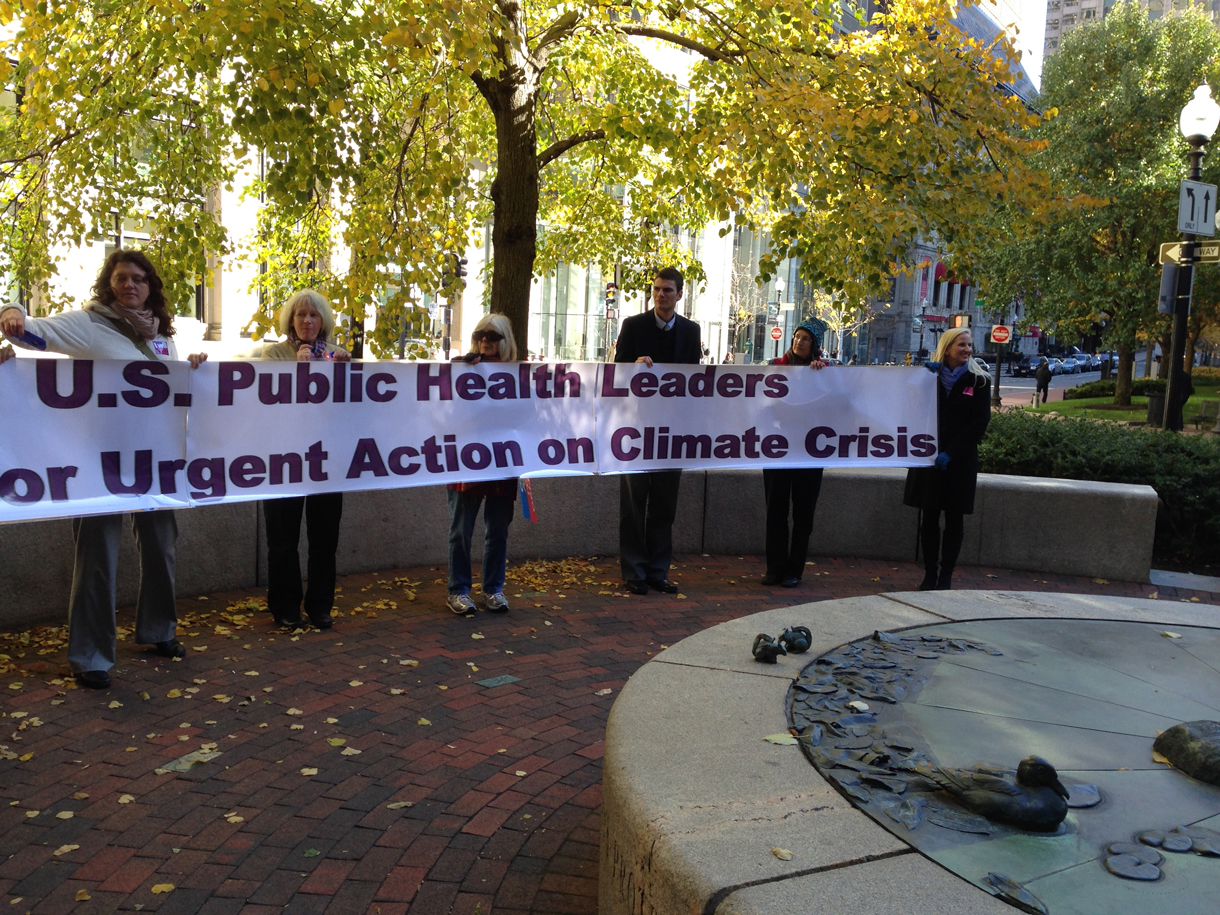
Public Health leaders point a sign at the EPA building (photo: Emmett FitzGerald)
CURWOOD: It’s Living on Earth, I’m Steve Curwood. Existing power plants are the biggest source of carbon pollution in the US, and new EPA rules to limit their emissions have been mired in controversy for years. As part of revising those proposed rules, EPA has been holding public hearings in 11 cities around the country, giving people a chance to sound off. In Boston, concerned citizens and activists gathered to show support for tough new limits on the biggest emitters, dirty coal plants, and Living on Earth’s Emmett Fitzgerald went along to listen in.
[CROWD SOUNDS]
FITZGERALD: It feels like winter outside the EPA office in downtown Boston, but the biting cold hasn’t deterred the fifty-odd people huddled together in Post Office Square Park. Sierra Club organizer Catherine Corkery brings the crowd together.
CORKERY TO CROWD: I am so excited. I’m sure you guys have been waiting as well to get some action on carbon for existing power plants, am I right? CROWD: Yeah! CORKERY:Alright!
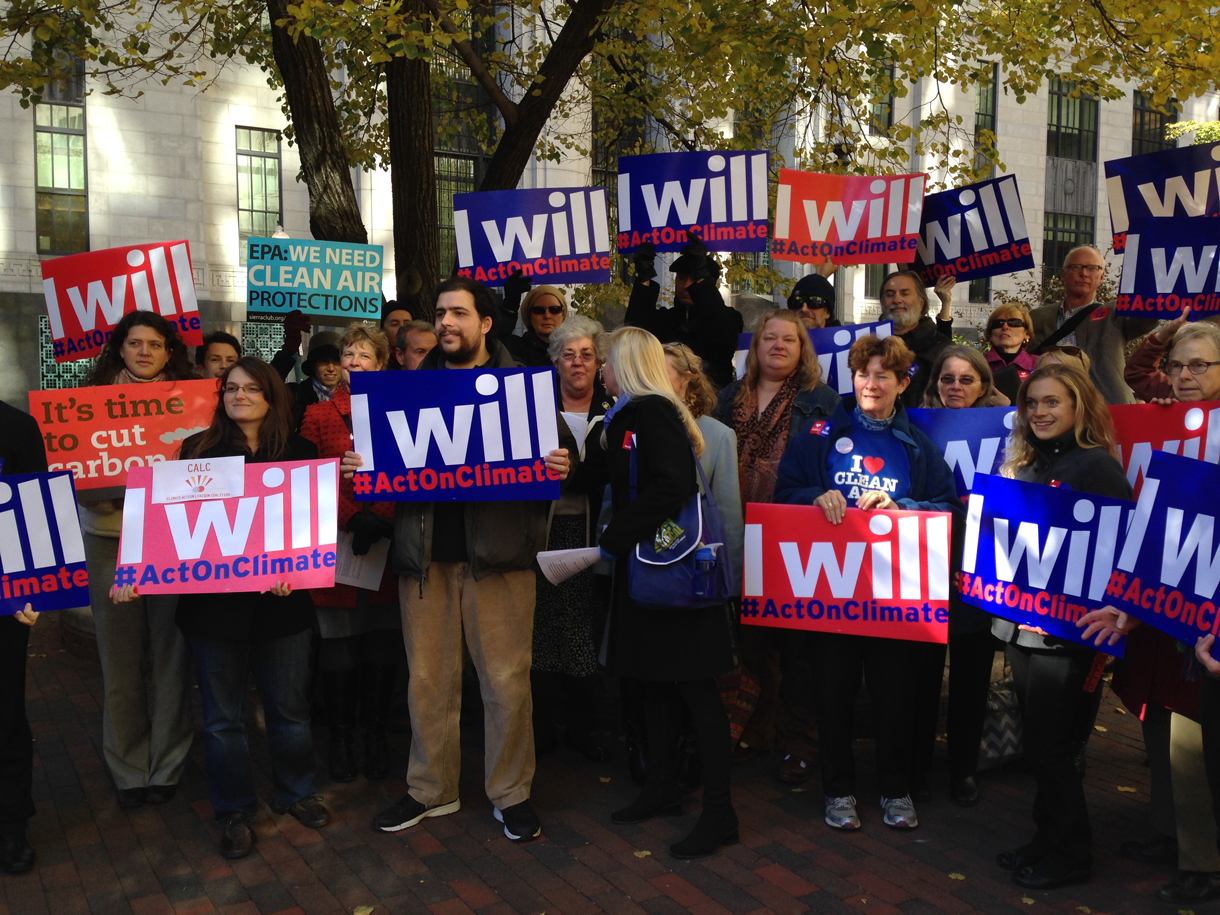
Concerned citizens gathered outside the New England EPA office in Boston to tell the EPA they support tighter regulations on power plant emissions (photo: Emmett FitzGerald)
FITZGERALD: They carry red and blue signs that say Act On Climate, and they’ve come from all over New England to show support for the EPA’s new carbon regulations.
SCHMITT: I’m Gail Schmitt, came from Grantham, New Hampshire
FITZGERALD: Gail made the three hour trek because she’s concerned about the impact climate change is having on the plants and animals around her New Hampshire home.
SCHMITT: I’m also here because the fish in our lake are contaminated with mercury from an existing power plant in Bow, New Hampshire, which is 50 miles away. So we’re poisoning our residents, that’s also a major concern.
FITZGERALD: The health effects of fossil fuel pollution are a major concern. Dr. Linda Rudolph of the Public Health Institute.
RUDOLPH: We have mountains of evidence that climate change has a huge impact on our health. And if we want to prevent catastrophic harm to our children and grandchildren, we need to support EPA’s rules now, and we need to remind every one of our elected leaders that they need to be thinking about climate change every time they make a decision.
FITZGERALD: Vincent Maraventano, Director of the Massachusetts Interfaith Power and Light, says that because most power plants are built near poor communities of color, carbon pollution is an environmental justice issue.
MARAVENTANO: Most of the people who die of extreme heat events are African American. More then twice the asthma sufferers in this country are African Americans.
FITZGERALD: And it’s not just in the US. Poor countries that emit relatively small amounts of greenhouse gasses will be hardest hit by the impacts of climate change.
MARAVENTANO: Climate change is a matter of climate justice. Environmental justice is not just about putting an incinerator next to the poor people. It’s about climate change.
FITZGERALD: But there will be losers as well as winners when the EPA clamps down on emissions. Natural gas plants should have little trouble meeting the new standards, but coal is another story. Without massive investment, coal plants will struggle to meet the new EPA rules. Phil Smith of the United Mine Workers of America, says that regulations like these kill jobs.
SMITH: When the Clean Air Act was passed in the early 1990s, we, within a couple of years, lost over 20,000 jobs.
FITZGERALD: And Smith says the current regulations could be even worse for coal because the carbon-capture and sequestration technology needed for coal plants to meet the rules is expensive and underdeveloped. Smith believes the loss of coal jobs would devastate the economies of coal states like West Virginia, Pennsylvania and Ohio.
SMITH: There are hundreds upon hundreds of communities that depend on these jobs and the taxes that come in to keep going; to provide for fire protection, police protection, to provide for good schools, to provide for transportation needs. All of that would be gone.
FITZGERALD: The crowd in Boston has sympathy for the miners. Stan Becker, a small business owner, says the labor issues can’t be ignored.
BECKER: People are going to lose jobs, and I think that has to be addressed. These are real people and it’s going to affect the communities that they’re in. So there’s got to be a way to address that if we’re going to be making these kinds of changes.
FITZGERALD: But some economists argue that transitioning to a clean energy economy will spur economic growth and create green jobs. Becker says if we want a stable economy, we have to slow carbon emissions.
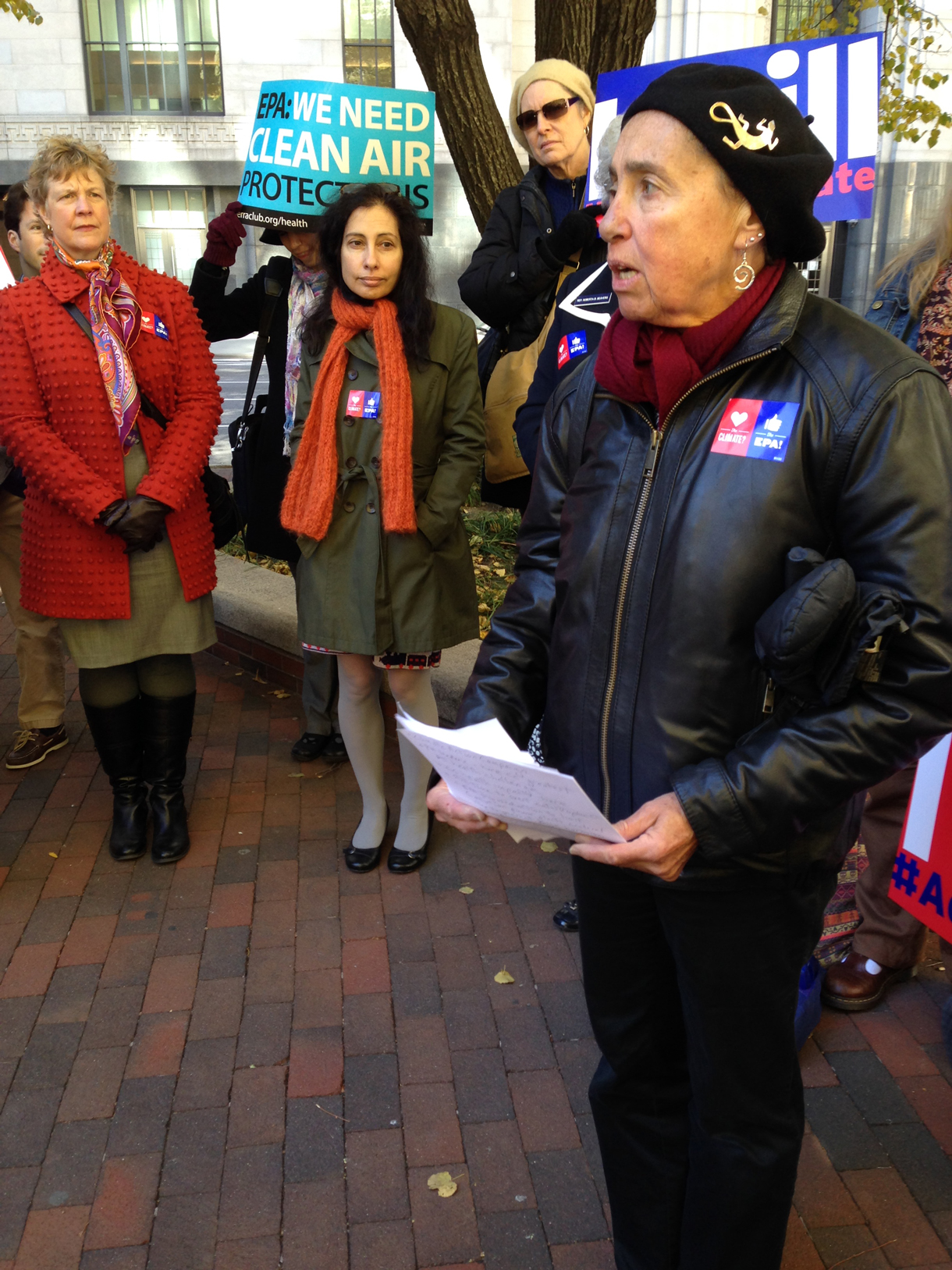
Linda Rudolph of the Public Health Institute speaks to the crowd about climate change and public health (photo: Emmett FitzGerald)
BECKER: I’m strongly in support of these standards. They’re essential to preserving the environment but they’re also essential for limiting the economic damage that’s going to come from climate change. In terms of extreme weather, fire, drought, rising sea levels…I mean there’re going to be real economic consequences.
FITZGERALD: The economy of the future depends on the success of small businesses, and Susan Labandibar, president of TechNetworks Boston, says that small business owners should support carbon regulation.
LABANDIBAR: Because small business owners are not in it for short-term profits, we don’t have to watch our stock price. What we’re trying to do is build a business with lasting value, and we need a couple of things for that. We need a stable economic environment, and we need a stable climate. Otherwise, we’re not going to be able to build the kind of future that we’re trying to build for our children and our employees.
FITZGERALD: It will be months, if not years, before the EPA emissions standards are finalized, and they will undoubtedly face legal challenges. But rallies like this across the country show that the public cares about carbon pollution. Vincent Maraventano says grassroots action will help push this legislation and these new rules through.
LABANDIBAR: It’s not going to happen top down, it’s going to happen bottom up. This is a moral challenge, it's a moral imperative! Thank you for coming here and helping to push the top!
[CHEERS OF CROWD AT RALLY]
FITZGERALD: For Living on Earth, I’m Emmett FitzGerald in Boston.
Related link:
Read about the EPA’s proposed emission standards here
Coal Plants Burning Wood
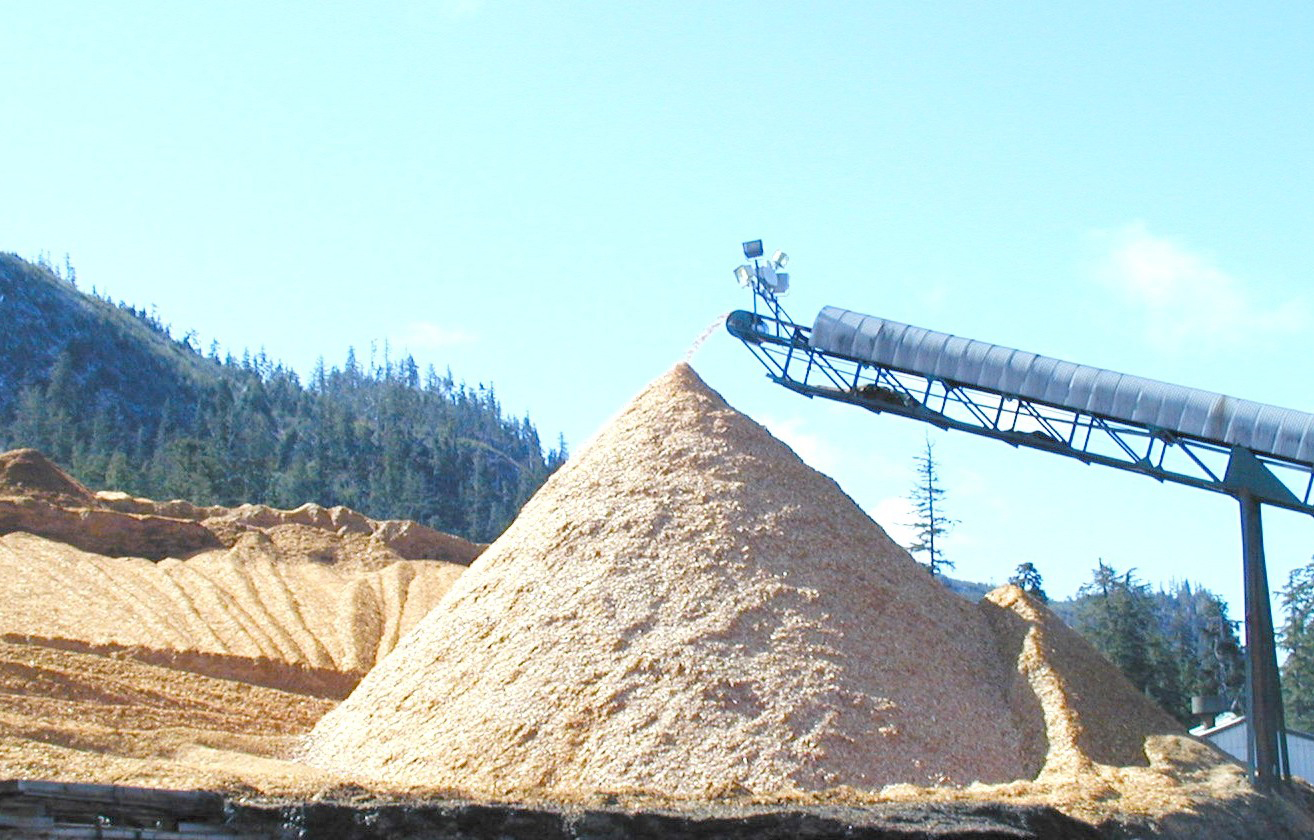
Wood wastes such as sawdust can be co-fired with coal (photo: Dave Nichols)
CURWOOD: Carbon-capture and sequestration technology is still experimental, so many coal plants are looking for alternative ways to reduce the CO2 from fossil fuels. Some utilities have started mixing their coal with a cheap material that could help them meet the expected EPA targets - wood. Dave Nicholls is a forest products technologist with the US Forest Service Pacific Northwest Research Station in Sitka, Alaska. Welcome to Living on Earth.
NICHOLLS: Thank you for having me.
CURWOOD: So tell me, how does this work? How do utilities, coal-fired power plants, use wood to reduce carbon emissions?
NICHOLLS: Well, woody biomass is a renewable source of energy. There are a number of parts of the country where there’s excess woody biomass that could be blended in with the coal, and then burned; in that manner, the result would be fewer carbon emissions. One of the advantages of wood is that it’s renewable. Coal is stored carbon. Once it’s burned it’s pretty much a one-way street up into the atmosphere, whereas wood, when it’s burned, is more on a short-term cycle that is quickly re-absorbed in new tree growth.
CURWOOD: Now, what do you call this?
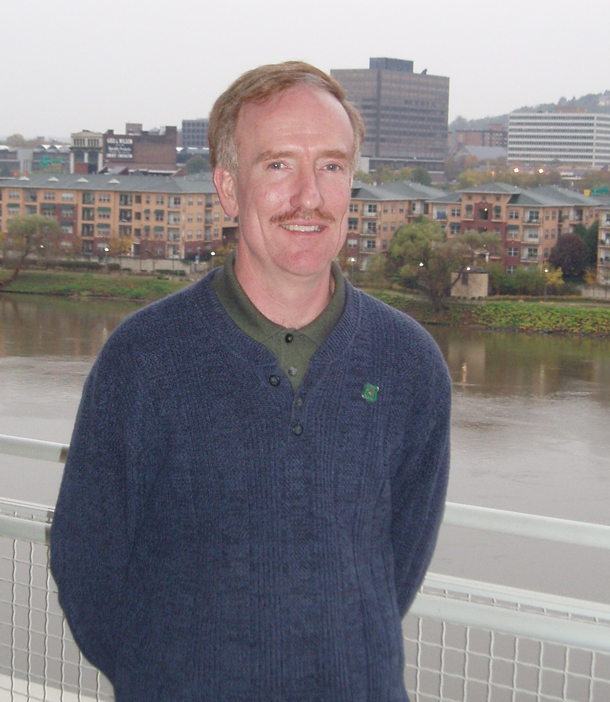
David Nicholls, USDA Forest Service, Pacific Northwest Research Station (photo: Dave Nichols)
NICHOLLS: Well the process is called co-firing, and in many cases, it can be a very simple process of just mixing in woody biomass with the coal before it’s burned, and one of the key advantages is that at low levels it can be done fairly inexpensively with only minor changes to the coal plant.
CURWOOD: When you say low levels what are we talking about?
NICHOLLS: Well, most of the time, co-firing is done at the 10 percent level or less, but on occasions it’s done even just a few percent. So if a coal plant is burning - say, 100 tons of coal, and with that, maybe mixing it just one or two tons of woody biomass could help. And given the large size of the coal plants throughout our country, co-firing at even a very small level of say, even one or two percent, could make significant changes.
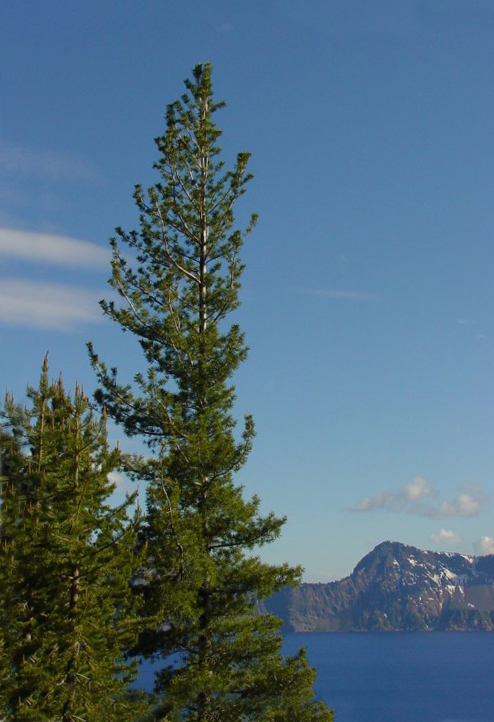
Residues from sustainable forest management activities can be co-fired with coal (photo: United States Forest Service)
CURWOOD: So, how effective is this strategy in terms of reducing emissions?
NICHOLLS: Well, much of the research has indicated that it would be very effective. Worldwide, over 200 coal facilities have conducted test burns. A lot of these are in Europe. In the US, over 40 coal plants have conducted test burns over the years, and it’s a very feasible and successful way of reducing greenhouse gas emissions.
CURWOOD: How sustainable is this, Dave? You know there’s not an endless supply of wood out there.
NICHOLLS: Right. That’s a good point, and the supply of wood is an important factor as well as the harvesting and transportation costs. For example, in the western states, there’s a lot of beetle killed timber that’s available for use, but the high costs of harvest and transportation in getting that to the mill could limit its availability.
CURWOOD: So even though the pine bark beetle has ruined a lot of forests, it doesn’t make sense to try to recover the energy in those trees.
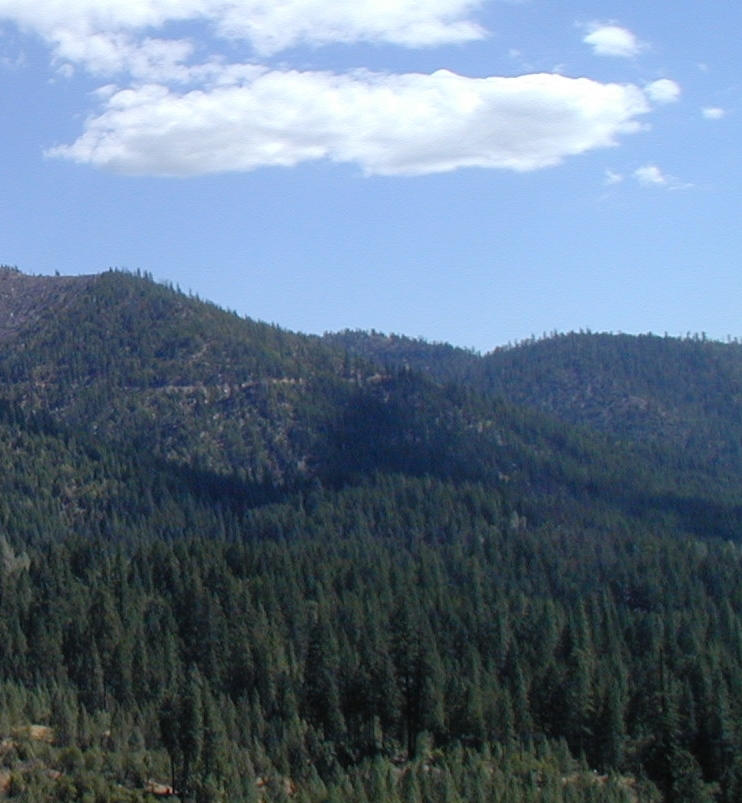
Many Western forests have been decimated by the pine bark beetle. Beetle-ruined wood can make good candidates for co-firing. (photo: David Nichols)
NICHOLLS: In some cases, that’s correct. If the costs of harvesting and transportation are too high, then the economics just wouldn’t pencil out. In other cases, if the economics are favorable then that could be an opportunity. For example, in the state of Colorado, there are a number of large coal facilities, and also large amounts of beetle killed timber as well.
CURWOOD: How might the burning of wood and coal-fired power plants help reduce the wildfire danger in the west?
NICHOLLS: Well, in general there are large amounts of overstocked forests, and also some beetle killed trees and diseased timber, and one way of looking at it is that if the trees burn out in the woods, all that carbon goes up into the atmosphere unused, but if some of that wood can be co-fired with coal and nearby coal plants, then energy is also generated in a more controlled burning environment.
CURWOOD: But how viable is this over the long term, blending wood with coal? To what extent might this help keep coal power plants open in the years ahead?
NICHOLLS: Well, there’s a great deal of research done in the 1990s at a number of coal plants with co-firing, so I think it’s a very viable strategy, and it can be used for fairly low capital investment when it’s done on small levels at coal facilities. So I think until methods are sequestering CO2 underground, which probably could be at least a decade into the future, I think that co-firing with wood and coal is a very viable bridge strategy for increasing our use of renewable resources while reducing CO2.
CURWOOD: Dave Nicholls is a Forest Product Technologist with the United States Forest Service in Sitka, Alaska. Thanks so much, Dave, for taking this time.
NICHOLLS: My pleasure.
Related links:
- Report—Biomass Co-firing: A Renewable Alternative for Utilities
- Co-firing Biomass and Coal for Fossil Fuel Reduction and Other Benefits—Status of North American Facilities in 2010
- Report—Biomass Co-firing in Coal-Fired Boilers
- Check out the Wood Chip Burning Plant at Schiller Station in Portsmouth, New Hampshire
[MUSIC: Herbie Hancock “Edith And The Kingpin from River: The Joni Letters (Verve Records 2007) Happy Birthday Joni Mitchell 11/07/1943]
Power Shift - Generating Community Solar Power

CURWOOD: And now, another in our series Power Shift, about the transition to low carbon energy in the Bay State.
[POWER SHIFT THEME]
CURWOOD: Massachusetts is one of many states that tries to encourage renewable energy generation with grants and price breaks for residential solar arrays. But not every residential roof top is appropriate for solar power. Maybe it’s oriented the wrong way or another building casts a shadow. Rather than give up on their sunny dream, some homeowners in suburban Massachusetts have come up with a novel solution. Living on Earth’s Bobby Bascomb has the story.
BASCOMB: The leafy rural town of Harvard, Massachusetts was settled back in 1658. Two centuries later Louisa May Alcott lived here. Harvard was the backdrop for her book Little Women. It’s quintessential New England - apple orchards surround the town, red and gold autumn leaves flank the town common. At one end of the green is a church with its tall white steeple reaching toward heaven at the other end - the 1896 Harvard General Store.
[DING OF DOOR BELL, SOUNDS OF WALKING ON CREAKY FLOOR AND STAIRS]
BASCOMB: Through the old wooden building, across creaky floors, up 3 flights of stairs, and there’s one Harvard’s leading citizens, the co-publisher of the town paper, the Harvard Press.
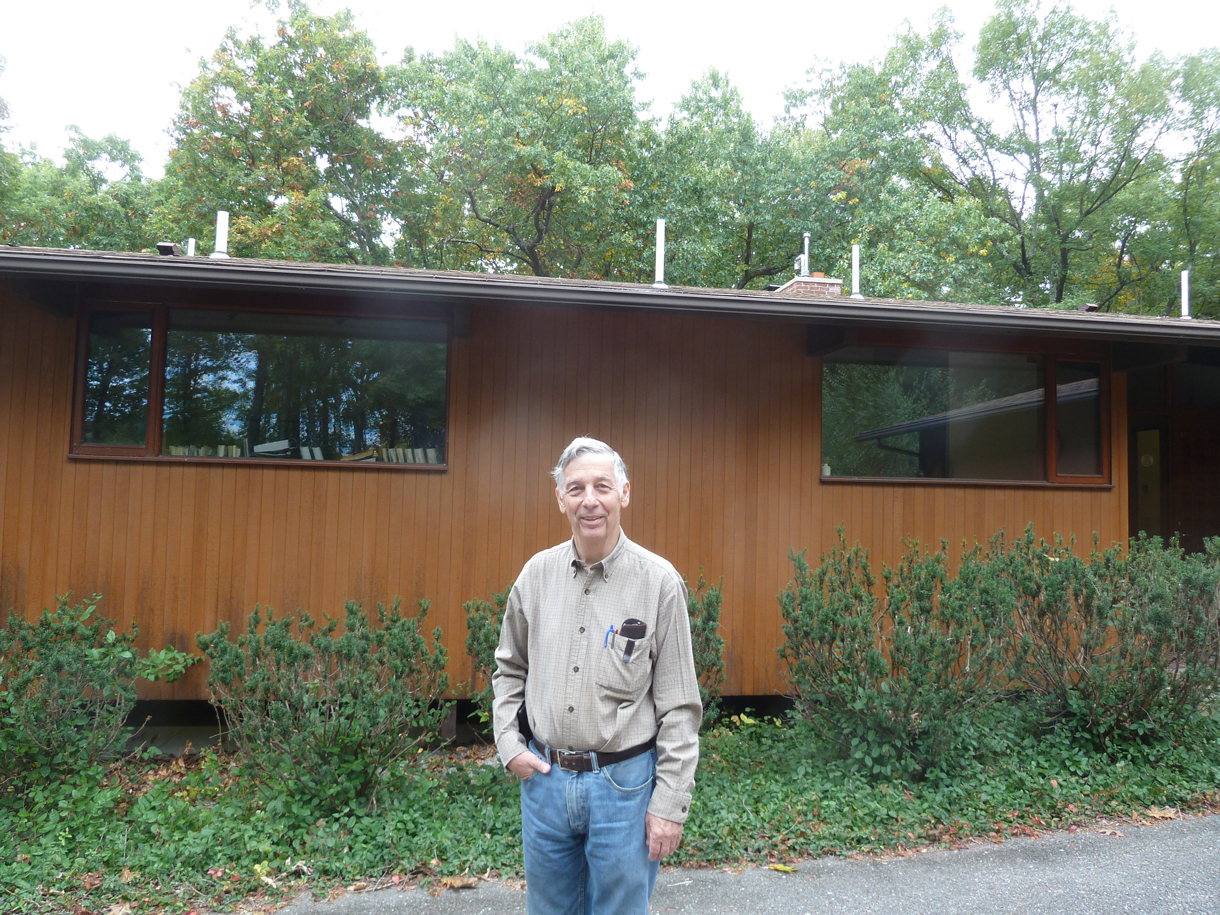
Worth Robbins stands outside his home. (Bobby Bascomb)
ROBBINS: My name is Worth Robbins and I was involved when Harvard went through the solarize process in 2011.
BASCOMB: Solarize Massachusetts is a state initiative to encourage homes and businesses across the commonwealth to add small solar arrays to their rooftops. There’s a special incentive - the more people that sign up in a community the less each individual has to pay per kilowatt of energy.
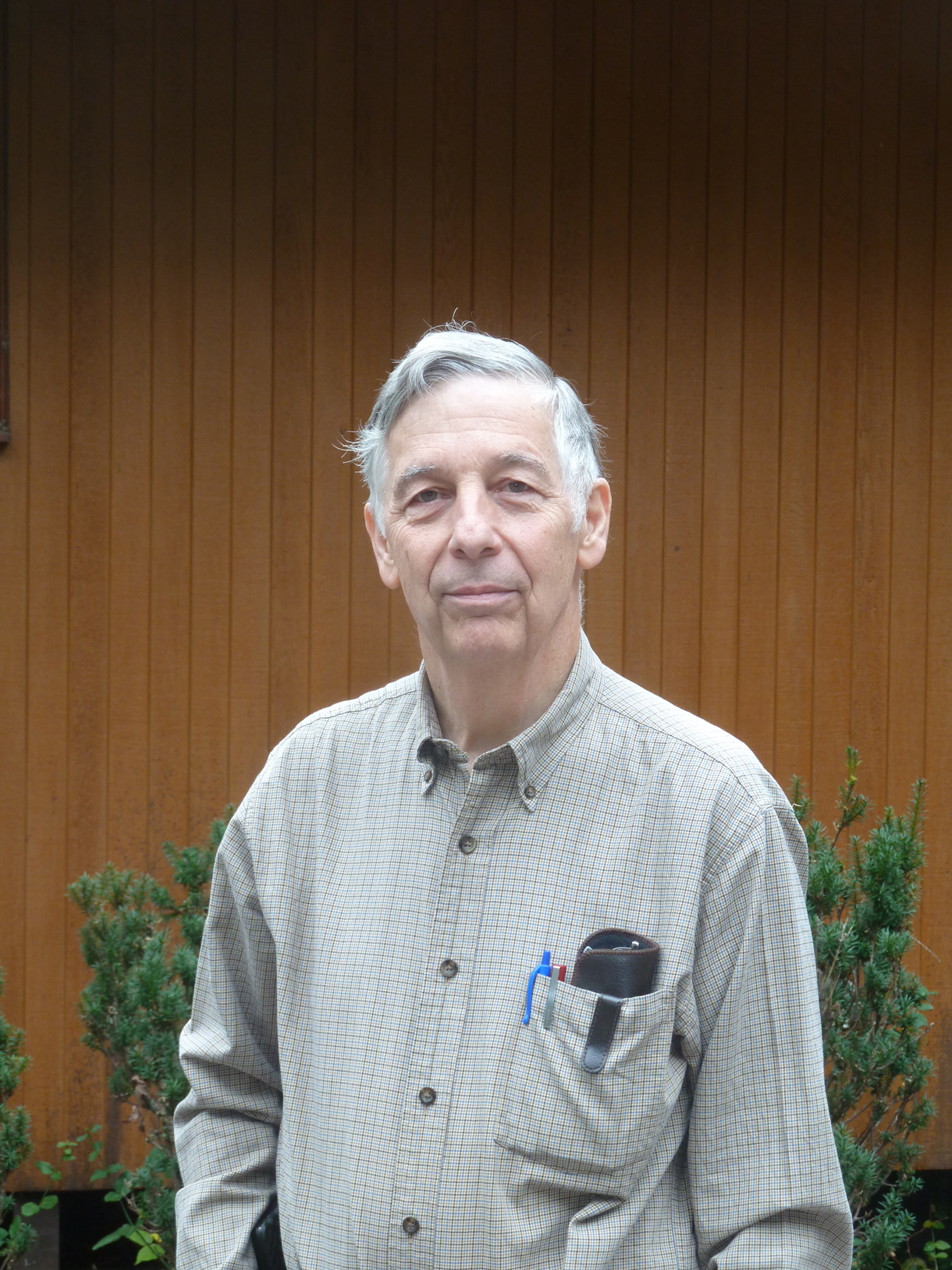
Worth Robbins is one of the principle organizers of the Harvard solar garden
ROBBINS: Harvard had a wonderful result from Solarize, we were one of four towns in the first pilot and we got over 400 kilowatts in 75 homes and that was out of a total statewide of just over 800 so we got half of the total.
BASCOMB: Worth was excited to participate in the Solarize Massachusetts project but quickly discovered that he couldn’t. To demonstrate why we pile into his Prius and head out to his home.
[CAR DOOR OPENS, TRAFFIC SOUNDS]
ROBBINS: We built our house in 1988. In fact I came out and spent many hours, many days and came out to make sure it was perfectly sited on a east-west access so it would be suitable for solar when the time came. What I didn’t take into account was that trees grow. Our house is right up that hill.
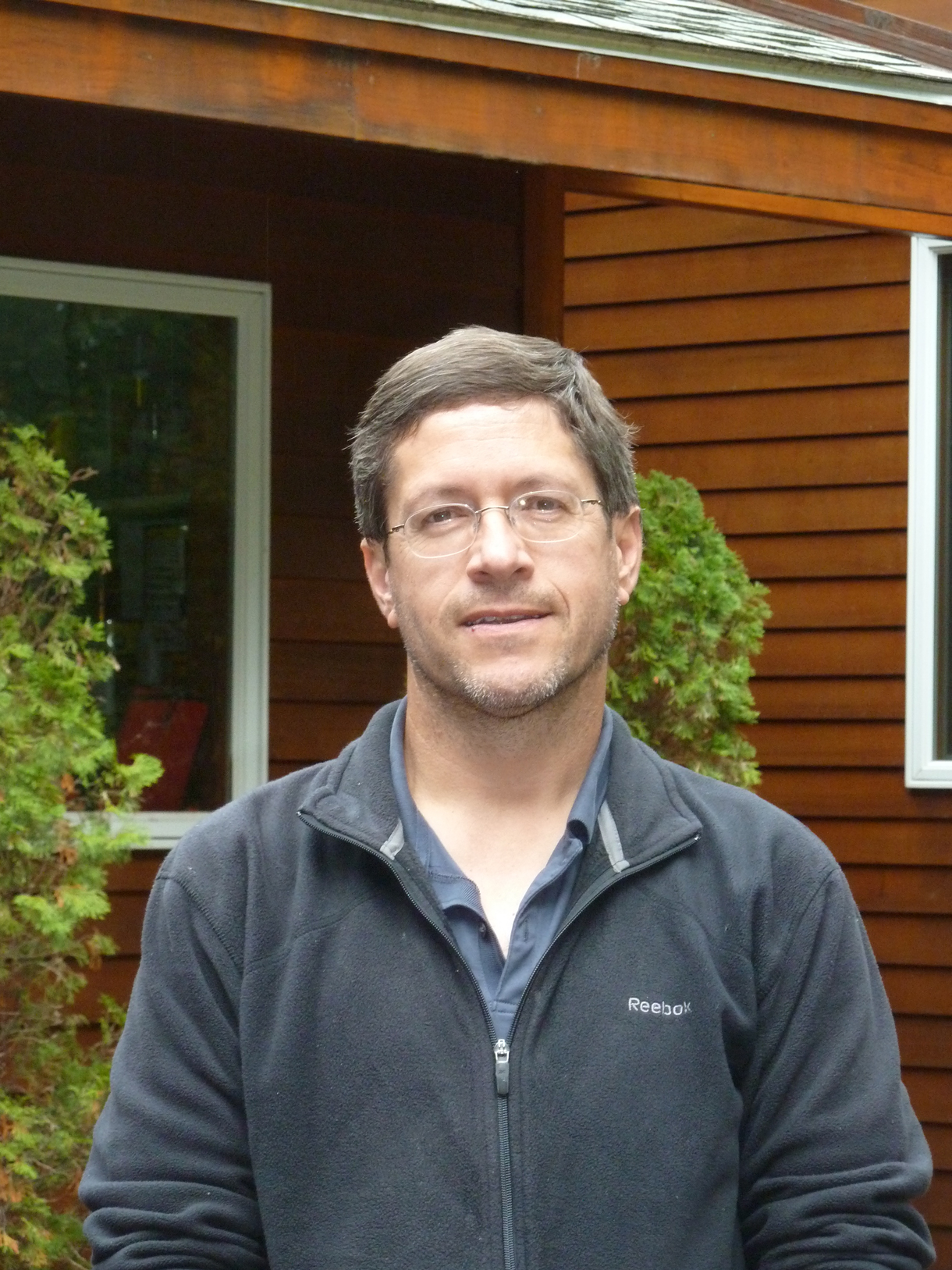
Karl Schwiegershausen is a volunteer with Harvard’s community solar project. (Bobby Bascomb)
BASCOMB: It’s a single story brown ranch house surrounded by woods. With trees full of autumn leaves we can’t see any neighbors. A couple of years ago solar assessors came to his home to make recommendations.
ROBBINS: The person who was doing the review started pointing out - that tree will have to go; that one, that one. So, we quickly got into the issue, not only would we have to cut trees on our property but on our neighbor’s property in order to open it up enough to be able to put it on the roof. Oh, and by the way we need 10 kilowatts to offset our usage and we could only get about 6 kilowatts on the roof, if and only if, we cut all the trees that are essentially the first rank away from the house.
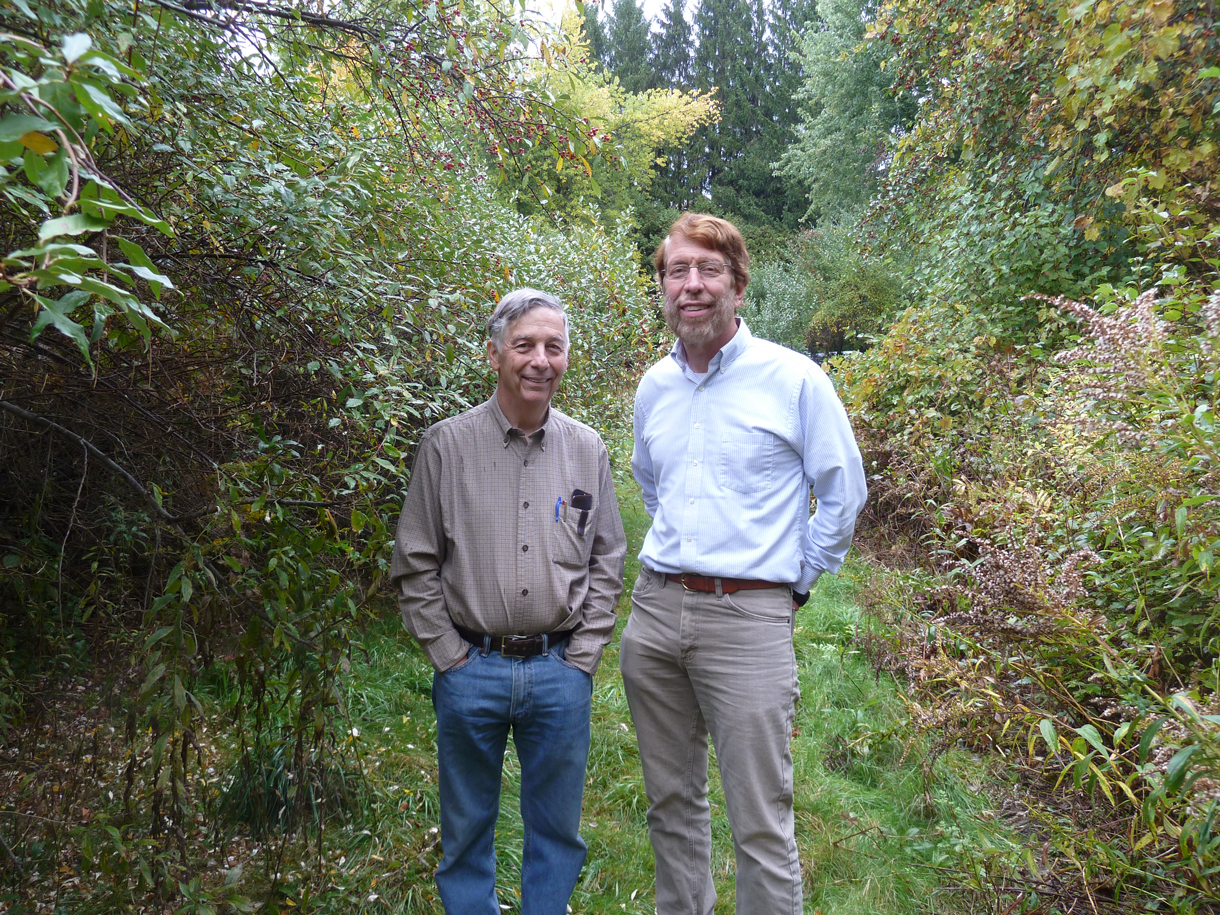
Worth Robbins (left) and Stephen Strong (right) standing in the scrub brush that will be the eventual site of the Harvard community solar array. (Bobby Bascomb)
BASCOMB (on tape): So, it’s not worth it.
ROBBINS: We didn’t want to do that. We like our wooded setting.
BASCOMB: Worth isn’t alone in his desire for solar panels on an unsuitable roof. Many of the houses here in Harvard are surrounded by leafy trees. Some homes date back to the 1700s and aren’t strong enough to support a solar array. Others have chimneys or dormers that cast shadows across the roof.
ROBBINS: So I began cultivating the idea of a community solar project.
BASCOMB: The idea is simple. If homeowners can’t have solar panels on their own property, just put them somewhere else. Karl Schwiegershausen is a volunteer with Harvard’s community solar project.
SCHWIEGERSHAUSEN: We’re trying to take the panels that we would ordinarily put on our residence and put them together somewhere in a location and use the magic of net metering to put the electrons into the grid at that location and then take them essentially back out at our residence.
BASCOMB: The technology exists to credit utility customers for energy generated remotely and some 35 households signed up. But then the red tape started. The first setback came from the state, which denied the credits and grants needed because there’s no classification for a community solar project like this. The state didn’t know if it should be regulated as a commercial or residential set- up. Again, Karl Schwiegershausen.
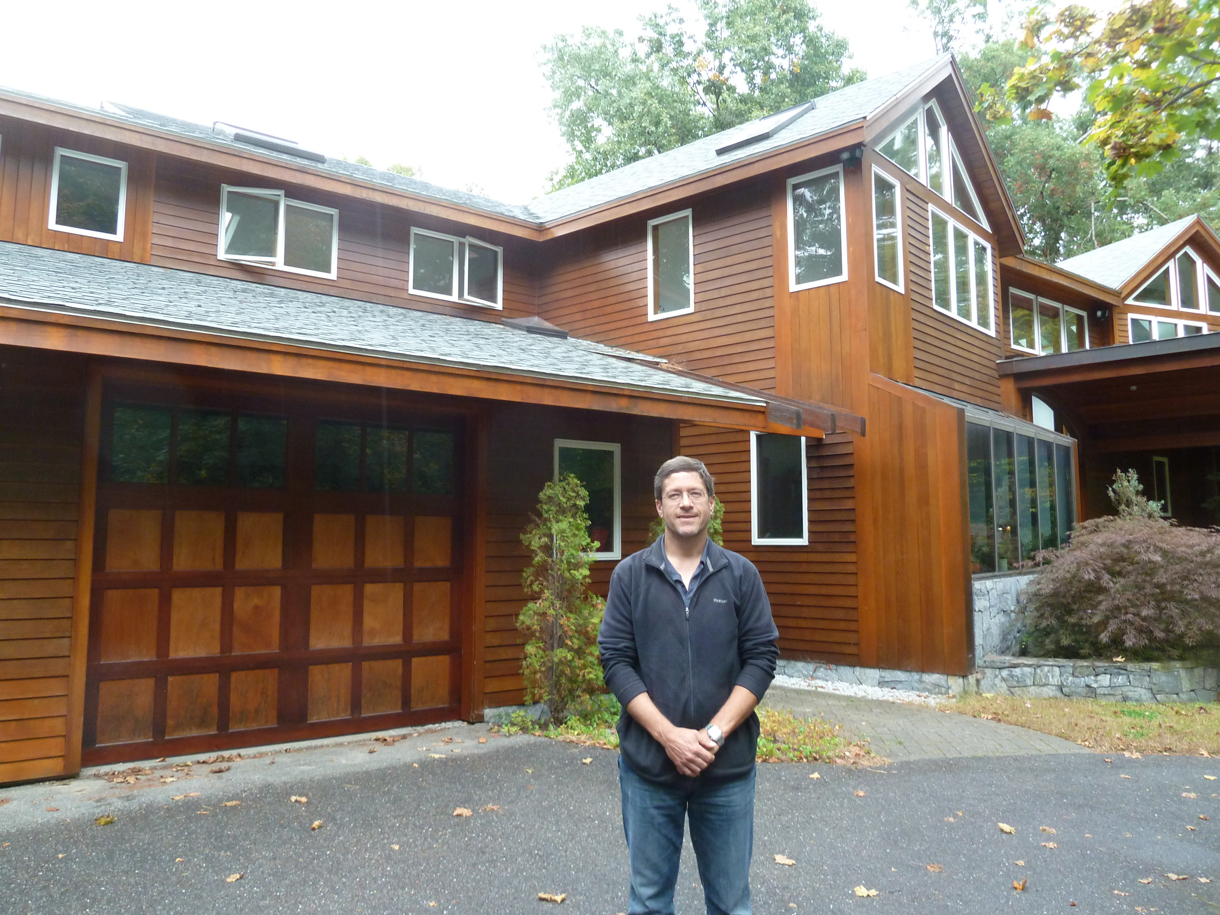
Karl Schwiegershausen’s home is also unsuitable for solar panels. (Bobby Bascomb)
SCHWIEGERSHAUSEN: If you put it on your roof and use the electrons right where you generate them no one really argues that that’s a residential application. But somehow, due to the fact that there’s now a larger group of those panels that are all individually residential applications, a lot of people now seem to think that’s a commercial application, simply because there’s an aggregation of panels that looks like a commercial array.
BASCOMB: The Harvard solar project is the first of its kind in Massachusetts and it’s always hard to be the first one to try something new. But projects like this are common in other parts of the country. That’s according to Jason Coughlin, a solar finance analyst with the National Renewable Energy Lab in Colorado.
COUGHLIN: Community solar is actually taking off across the nation, primarily in a handful of states such as Colorado, California, Arizona. Some recent legislation in Minnesota looks to open that market as well. It’s a couple of states that have been on the forefront of solar in general so it makes sense that they’re leading the charge as it relates to community solar.
BASCOMB: Solar power in general is growing very quickly but community solar projects like this are a small part of that growth. Coughlin estimates that in the second quarter of this year roughly 800 megawatts of solar capacity was added to the grid in the US and roughly 25 megawatts of that energy comes from community projects.
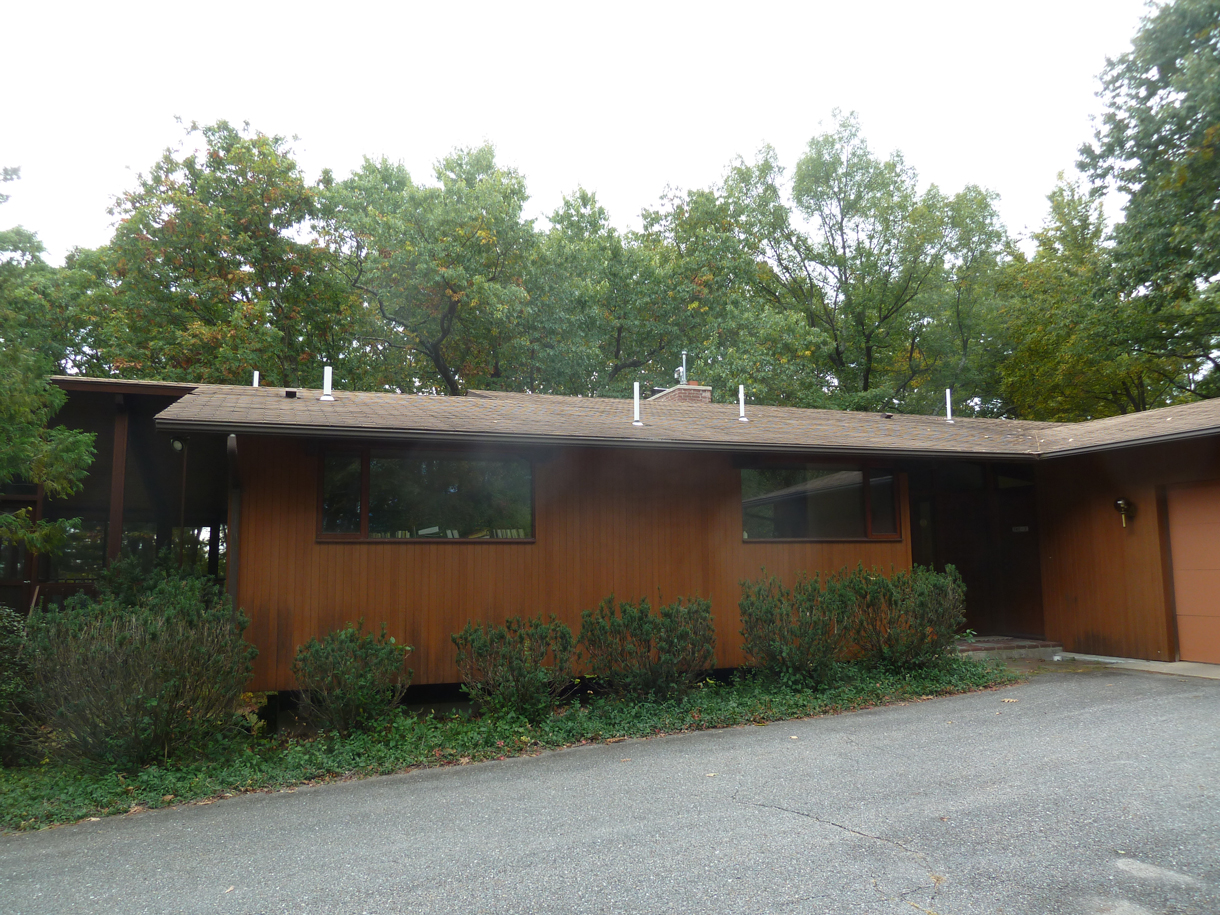
Worth Robbin’s home is surrounded by trees and not suitable for a solar array. (Bobby Bascomb)
Back in Massachusetts, state authorities eventually relented and incorporated new wording in the regulations to include a community solar array like the Harvard project. But then there were problems with the town. Again, Karl Schwiegershausen.
SCHWIEGERSHAUSEN: In the town, I think there was more concern that if they were to give us a certain arrangement, that there might be an opening or a precedent set for larger commercial ventures to come in in a way that the town might not be comfortable with.
BASCOMB: Marie Sobalvarro is chair of the Harvard Board of Selectmen. She says most new commercial projects are welcome in the town.
SOBALVARRO: Harvard basically derives about 94% of its tax revenue from residential, which is an unduly high percentage, and there’s been ongoing interest in increasing the commercial tax revenue base to take some of the load off the residences.
BASCOMB: Initially the town wanted to tax the project at a commercial rate. Solar advocates and selectmen are still negotiating how much the array will pay in fees and taxes, but basically the town now supports the initiative. However, then came the problem of where to put the solar panels.
[CAR DRIVING SOUNDS]
BASCOMB: We climb back in the car and Worth Robbins heads down a bumpy dirt road to an abandoned apple orchard, the original place selected for the solar project. That site met with fierce opposition.
ROBBINS: That first apple tree that I’m pointing at now is the beginning of the orchard. The first 3 rows were not going to be taken, so there’s no way that anyone would be able to see the panels other than if they walked back in here to look.
BASCOMB (on tape): So, what was the objection?
ROBBINS: Well, the objection was that they were a big commercial system in a residential neighborhood. It was more emotional than rational in my judgment.
BASCOMB (on tape): That must be frustrating.
ROBBINS: It was very frustrating. We probably could have taken it to court and prevailed but we didn’t want to do that. We wanted this to be compatible with the community.
BASCOMB: In a town of 6,000 people everyone knows everybody else. They keep bumping into each other - at the general store, at church, at the dump. Worth didn’t want to make any enemies, so he started looking for a new site for the project. This time, in a commercial zone.
[CARS DRIVE BY, BIRD SONG]
BASCOMB: The new site for the solar farm is on the outskirts of town. The closest neighbors are an office building and a pizza joint. Currently it’s two and a half acres of scrub brush. Steven Strong, the president and founder of Solar Designs, met us there.
STRONG: We expect to begin construction within about a month. The first effort there will be clearing the scrub that you see and have that done before the weather turns and the frost sets in. We’ll be ready then for installation of the ground mounted solar arrays as soon as the weather breaks in the spring.
BASCOMB: To qualify for the grants that make this project possible, Worth Robbins says the solar array has to be operational by June 2014.
ROBBINS: So that’s our outside date. Operational, meaning the system is generating and the credits are flowing, so that’s the latest that it can be.
BASCOMB: So eight months from now, you have to be operational and generating electricity and right now we’re standing in a scrub.
WORTH: Right.
BASCOMB: Do you think that’s going to happen?
ROBBINS: I do. Stephen will tell you—what is it that you call me?—some kind of optimist with some a pejorative adjective.
STRONG: Worth is an optimist, an undeniably incurable optimist. That’s the only reason why the garden has gotten this far.
BASCOMB: It’s nice that you refer to it as a garden.
STRONG: Well, we’re harvesting sunlight. It’s not just producing scrub brush, it’s producing electricity, which is valuable and universally required by everybody. Solar and renewable energy is our future. The quicker we realize that, the better we’re going to be.
BASCOMB: So far six businesses and 35 households have signed up to get their power from the Harvard community solar project. When it’s complete, the solar farm will produce more than 530 kilowatts of energy, enough for another 25 households to join in. Ever the optimist, Worth Robbins says it’s just a matter of time before his neighbors see the light and sign up for the solar garden.
For Living on Earth, I’m Bobby Bascomb in Harvard, Massachusetts.
Related link:
Solarize Massachusetts
CURWOOD: Coming up...new rules to bring the threatened bluefin tuna back from the brink of extinction. That’s just ahead on Living on Earth. Stay tuned.
ANNOUNCER: Funding for Living on Earth comes from the Grantham Foundation for the protection of the environment, supporting strategic communications and collaboration in solving the world’s most pressing environmental problems. The Kendeda Fund, furthering the values that contribute to a healthy planet, and Gilman Ordway for the coverage of conservation and environmental change. This is PRI, Public Radio International.
[CUTAWAY MUSIC: Jon Cleary: “Zulu Strut” from Mardi Gras 09 (Basin Street Records 2009)]
BirdNote ® Whooping Cranes

Whooping Crane and Sandhills on the Platte (©The Crane Trust)
CURWOOD: It's Living on Earth, I'm Steve Curwood
[MUX - BIRD NOTE® THEME]
CURWOOD: As well as shorter days, migrating birds are a feature of this season, especially on
the major routes that transit North America, like the Central Flyway from the Gulf of Mexico to
Canada. Here's Michael Stein with our BirdNote®.

Whooping Cranes (© Claire Timm)
[WIND ON THE LAND PLUS WATER AT RIVER’S EDGE]
STEIN: We’re here this early November dawn on the Platte River in Central Nebraska. Out of the
east, in the first light, flying low above the river’s braided channels comes a small aircraft.
[Sound of Cessna 172 four-seater airplane]
You could call it the Platte River Crane Plane. The pilot and two observers are searching for
Whooping Cranes.
[BUGLING OF WHOOPING CRANES]

Sandhills over the Platte (© J. Reed)
With a population of just 270, these birds are among the most endangered in North America.
Breeding in Wood Buffalo National Park in Canada, the cranes fly south to winter along the coast
of Texas. In Autumn they pass through the Platte River Valley, typically during late October and
early November.
[BUGLING OF WHOOPING CRANES]

Sandhill Crane (© Tom Grey)
If cranes are spotted, a ground crew hurries to their location to monitor the birds’ behavior and
document their choice of habitat. This careful observation is made possible by a precedent-setting
court ruling giving endangered wildlife and their habitat legal standing in the use of the Platte
River’s water.
Two planes fly every day between early October and early November.They fly at first light because the cranes, to protect themselves from predators, stand in the river’s shallow waters at night.
One could do worse than to be, at dawn, an observer of cranes.
[BUGLING OF WHOOPING CRANES]
I’m Michael Stein.
CURWOOD: To see some photos of the Whooping Cranes, swoop on down to our website LOE.org.
[Written by Todd Peterson. Bird sounds provided by The Macaulay Library of Natural Sounds at the Cornell Lab of Ornithology, Ithaca, New York. Bugling call of Whooping Crane [WHCRguard] recorded by J. Huxmann. Wind in reeds recorded by Gordon Hempton of QuietPlanet.com. Lapping of water recorded by C. Peterson.
BirdNote’s theme music was composed and played by Nancy Rumbel and John Kessler. Producer: John Kessler Executive Producer: Chris Peterson © 2013 Tune In to Nature.org November 2013 Narrator: Michael Stein]
[MUSIC: Hiroshima “Thousand Cranes” from Departure (Warner Bros 2011)]
New Protection For Blue Fin Tuna
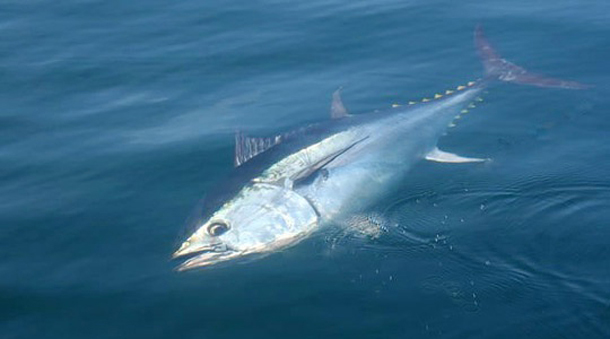
Populations of Bluefin Tuna have sharply declined in the Atlantic Ocean. (Photo: Paul Murray, Courtesy of Large Pelagics Research Center)
CURWOOD: There are nowhere near as many of the huge magnificent bluefin tuna as there used to be off the shores of America, but perhaps new rules proposed by the National Marine Fisheries Service may help their population recover. For an assessment, we called up Carl Safina, President of the Blue Ocean Institute who's both a fisherman and a strong voice for conservation. Carl, welcome back to Living on Earth.
SAFINA: Hi there, thanks for having me.
CURWOOD: Let’s go to the basics here. Why are bluefin tuna in such as steep population decline right now?
SAFINA: Well, it’s not clear they’re in a steep decline right now, but they’re in a big hole. They sort of have fallen and they can’t get up. In the 1960s boats from Japan went into their breeding grounds in the Gulf of Mexico, and they caught an incredible amount of bluefin tuna there while they were trying to breed. After that, other boats caught the babies for canning. So you have the Japanese taking the breeders, you had the canners taking the babies. Then in the 70s and the 80s Americans got into the sushi business, and the population has never recovered from the hole that it went into.
CURWOOD: So talk to me about this plan by the National Marine Fisheries Service to protect the bluefin tuna.
SAFINA: The idea is to try to have fewer of these bluefin tuna killed on their spawning grounds while they are spawning. People are fishing in there with long lines which are a long fishing line, about 25 miles long. It has hundreds of baited hooks. They’re allowed to keep a couple of bluefin tuna and other things that they catch, and so they continue to have incentive to be fishing in the breeding area catching these giant tuna with can weigh 1,000 pounds or more, and keep a couple. They’re extremely lucrative, but they kill others in the process and they discard them because they’re not allowed to keep them. This is a proposal that attempts to improve on the situation.
CURWOOD: 25 miles of long line. What other fish are they catching?
SAFINA: They catch a lot of things they’re not intending to catch, including marlin and sailfish, which they cannot sell - that’s supposed to protect them - but a lot of them get killed anyway. So those populations of some of those marlin are in very, very bad shape. They catch a lot of sharks, they catch sea turtles, in some places they catch a lot of sea birds, and they’re very bad at targeting things well even if they’re fishing for something like, let’s say, swordfish, they can catch a lot of juvenile swordfish that are too small to sell - that come up dead.
CURWOOD: Well, how would these new regulations from the National Marine Fisheries Service help?
SAFINA: It would let them fish there in a smaller area for a shorter amount of the season. So you might say that’s an improvement, or you might say it doesn’t really go far enough.
CURWOOD: In your view?
SAFINA: Not far enough.
CURWOOD: Because...
SAFINA: Well, because these fish have been in a deep hole for many decades, and I don’t think you should be fishing for a deeply depleted fish while it is trying to reproduce. I think that if any place should be a protection zone where the survivors have finally managed to get themselves to in order to spawn is a place where they should just spawning and not dying.
CURWOOD: How do you police something like this?
SAFINA: You can police it on the fishing ground which is very very difficult to do, or you can police it at the dock, but there’s an incentive to pass fish among boats, there’s incentive to hide fish. There will be people who probably will decide to do some cheating.
CURWOOD: The National Marine Fisheries Service says they’ll have observers and they’ll even have cameras on these boats. How effective might that be?
SAFINA: I think in the US it’s probably pretty effective. The observers and the cameras are for two reasons. One is because there can be incentive to try to bribe the observers and the other is because observers cannot stay awake 24 hours a day or be looking in all directions at once.
CURWOOD: What are the different sides of this argument? What about the folks that say this goes too far?
SAFINA: There are people who say there are plenty of bluefin tuna, there are plenty of those who say they’re recovering well. There are people who say a lot of things, and I think all those things are partly true, but if you compare the number of fish to the number of fish that are supposed to be, it’s vastly fewer than it was when I was a child, and if we could get it back, which could happen in a reasonable amount of time, then you could catch a lot more of them, more sustainably, from a population that is much bigger and recovered from the small population that exists now.
CURWOOD: So what would be the ideal plan for you to regulate the bluefin tuna?
SAFINA: In a perfect world, we would not catch these fish at all for about five years. We would just give them a break and let the young ones grow up, let the big ones spawn, and let the good times roll, and then reassess it and see if we want to resume fishing at that point, and how many we could take.
CURWOOD: If consumers are concerned about this, what should they do?

Carl Safina (photo: Pat Paladines)
SAFINA: There are a couple of different levels at which consumers could act on their concern. One is not eating any bluefin tuna at all. The other thing is to try not to eat animals that are caught with long line fishing gear, and there are a couple of groups - my group Blue Ocean Institute - and the Monterey Bay Aquarium - put out guides to sustainably-caught fish that can help you try to figure out what fish are caught with relatively clean, relatively sustainable techniques from better managed fisheries.
CURWOOD: Carl Safina is the Founder of the Blue Ocean Institute. Thanks for joining me today.
SAFINA: It was a pleasure as always. Thank you.
Related links:
- NMFS Extends Comment Period for Draft Amendment 7 (Bluefin ...
- NOAA seeks comments on Atlantic bluefin tuna management ...
- http://www.nmfs.noaa.gov/sfa/hms/hmsdocument_files/Tuna.htm
- Visit the Safina Center at Stony Brook University's site to learn more
[MUSIC: Hot Tuna “Keep On Truckin” from The Best Of Hot Tuna (BMG Music 1998)]
Beyond the Headlines
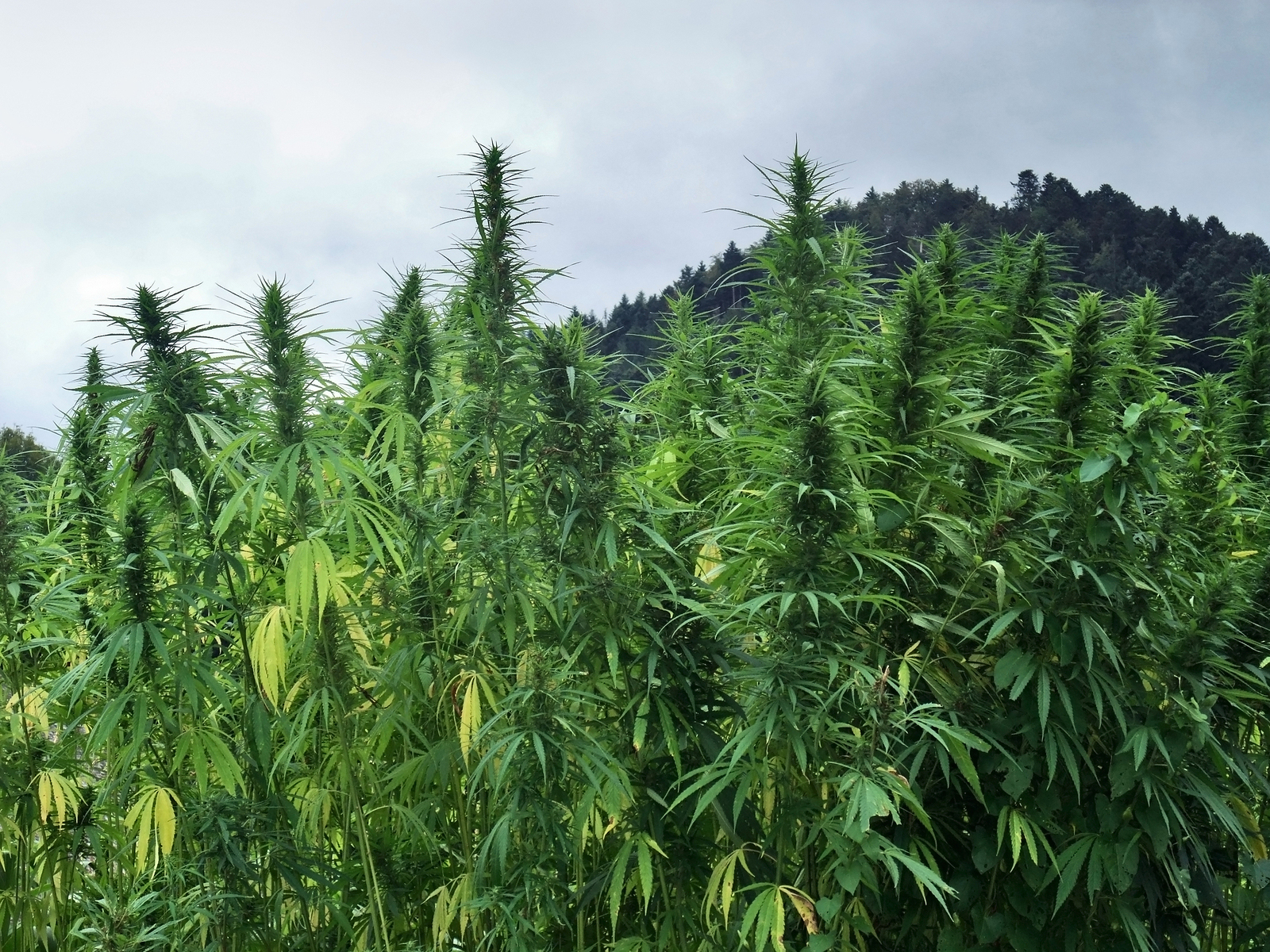
Marijuana growing in a field. (Bigstockphotos.com)
CURWOOD: Time now, for a few stories from beyond the headlines. Peter Dykstra, publisher of the Daily Climate and Environmental Health News, combs the Internet for stories of environmental change from around the planet along with his team. They find everything from the off-beat to little-noticed topics that we should watch out for as they emerge over time. Peter Dykstra's on the line
DYKSTRA: Hi, Steve!
CURWOOD: So this week you're going to tell us about bugs and grass, huh?
DYKSTRA: Well, yeah. Bugs and grass, but not the bugs and grass you might expect to hear about in an environmental news show. We’re talking grass as in marijuana. A lot of people think of pot growers as back-to-Earth, nature-loving types, and you might think of The Nation magazine being staffed by dope-smokers and Bohemian intellectuals. We’re going to knock those stereotypes down with this first story: The Nation sent a reporter, Seth Zuckerman, into the Cannabis Corridor, that’s the area in Humboldt County rural northern California. Up there in the mountains in the secluded woods, there are thousands of illegal pot plantations, marijuana farms. Some of them are small mom-and-pop sized plots. They don’t really do huge environmental damage, but the big ones are the cannabis equivalent of industrial farming. So if you’re thinking of all this as “Cheech and Chong,” it’s really going to be a lot more like “Breaking Bad.”

Thomas Midgely (Wikimedia commons)
CURWOOD: [LAUGHS]
DYKSTRA: They clear the land for this booming business, and as that happens, silt is washed into creeks, salmon runs are damaged, amphibians, small mammals, other wildlife is harmed. The farms grow bigger, and there’s more and more pressure to load fertilizer and illegal pesticides into the operation. And why bother about the illegal pesticides? I mean if you’re already farming something that’s illegal why worry about breaking a pesticide law? The biggest farms also divert enough water to damage stream ecology during the dry season.
CURWOOD: Whoa. So in other words, nature is going to pot because of pot?
DYKSTRA: You might say that.
CURWOOD: OK. Well, what about the bugs, Peter?
DYKSTRA: Folks who listen to Living on Earth listen largely because they get environmental news that they can’t hear in a lot of other media, the stories that get drowned out by blockbuster stories like the NSA leaks, and all these reports about spying and wiretapping world leaders. And this week, we’re in luck because we’re going to get a some of both at the same time. The British newspaper The Guardian reported this week that at a UN Climate Change conference six years ago in Bali in Indonesia, the NSA teamed up with their Australian counterparts, the Defence Signals Directorate, in an attempt to get the phone numbers of all of Indonesia’s top security officials in order to bug their phones. After the spying attempt was revealed by The Guardian, the Indonesian Foreign Minister reacted with kind of a mild form of diplomatic outrage. The best part of it was he managed to squeeze in an insect metaphor about the bugging. He said the attempt to bug them was “Not Cricket.”
CURWOOD: And so what did they get out of this bugging operation?
DYKSTRA: Not much, they didn’t get much out of it at all. In fact, they only got one phone number, and that was the phone number of the Chief of Police in Bali. And that fits in with the tradition of these UN climate conferences where everyone comes in with low expectations and everybody comes out with little result.
CURWOOD: And it sounds like the spying business is going from the Cold War to global warming, huh?
DYKSTRA: There you go. Score one for Steve Curwood!
CURWOOD: [LAUGHS] Hey, Peter, before you go, tell me, what do you have on the calendar this week?
DYKSTRA: We’ll take a look at a guy who is hardly a household name, Thomas Midgley, most people haven’t heard of him. He probably ranks, however, with people like Albert Einstein and Jonas Salk among the most impactful scientists we saw in the past century. Back in 1921, he was working in the chemistry lab of an automotive manufacturer, looking for a way to end engine knock, it’s that loud sound that was a big problem with old cars. Midgely eventually found a way to add tetraethyl lead to gasoline, and it made the knocks go away. It made Midgley something of a rock star in chemistry, so his next job was to tackle refrigeration and air conditioning, and he developed chloroflurocarbons, CFCs. They kept our food cold and our living spaces cool. And for a time, they were godsends, both leaded gasoline and CFCs, chloroflurocarbons. But we found a different story many many decades later, leaded gasoline is a major source of neurological damage, particularly a problem with kids, it was outlawed. CFCs are a huge problem in that they are primarily the culprit in destroying the ozone layer. They had to be outlawed by international treaty. Thomas Midgley died 69 years ago this past week. He never lived to see the damage or the downfall of his inventions.
CURWOOD: So how did he die? I’m wondering if the toxic inventions - that lead - might have played a role in Midgley’s death?
DYKSTRA: Well, it wasn’t the lead, it wasn’t the CFCs, but another one of his inventions got him. Thomas Midgley contracted polio late in life. He developed a passion for helping himself and helping all of the disabled. He developed a rope-and-pulley system to pull himself out of bed. He wanted to market it to disabled people all over the world, but as he was working with it, he got stuck in the ropes of his own invention and was strangled to death by his own invention. Yes, that really happened.
CURWOOD: That really happened, huh?
DYKSTRA: Really happened.
CURWOOD: Peter Dykstra is publisher of EHN.org and DailyClimate.org. Thanks. I suspect some folks may want to look that last one up, and you can find it all on our website at LOE.org. Talk to you soon, Peter.
DYKSTRA: Thanks, Steve.
Related links:
- Environmental Health News
- Thomas Midgley Jr.
[MUSIC: Steve Cropper “Help me Somebody” from Dedicated- A Salute to the 5 Royals (Stax Records 2011)]
CURWOOD: Next time on Living on Earth, as the Arctic continues to warm, hungry polar bears are showing up in Hudson Bay towns in Canada.
DESROCHERS: The ice is just retreating too far north. Their only real option is to jump off and come ashore. Of course, that puts them around the communities there.
CURWOOD: And that can spell trouble between great white bears and people. That's next time on Living on Earth.
CURWOOD: Living on Earth is produced by the World Media Foundation. Naomi Arenberg, Bobby Bascomb, Emmett Fitzgerald, Andrew Keys, Helen Palmer, Kathryn Rodway, Adelaide Chen, James Curwood, Jennifer Marquis and Gabriela Romanow all help to make our show. Jeff Turton is our technical director. Alison Lirish Dean composed our themes. You can find us anytime at LOE.org, and like us on our Facebook page - it’s PRI’s Living on Earth. And we tweet from @LivingOnEarth. I'm Steve Curwood. Thanks for listening.
ANNOUNCER 1: Funding for Living on Earth comes from the Grantham Foundation for the protection of the environment, supporting strategic communications and collaboration in solving the world’s most pressing environmental problems. The Kendeda Fund, furthering the values that contribute to a healthy planet, and Gilman Ordway for coverage of conservation and environmental change. Living on Earth is also supported by a friend of Red Tomato, supplier of righteous fruits and vegetables from northeast family farms. www.redtomato.org. This is PRI, Public Radio International.
ANNOUNCER 2: PRI, Public Radio International.
Living on Earth wants to hear from you!
Living on Earth
62 Calef Highway, Suite 212
Lee, NH 03861
Telephone: 617-287-4121
E-mail: comments@loe.org
Newsletter [Click here]
Donate to Living on Earth!
Living on Earth is an independent media program and relies entirely on contributions from listeners and institutions supporting public service. Please donate now to preserve an independent environmental voice.
NewsletterLiving on Earth offers a weekly delivery of the show's rundown to your mailbox. Sign up for our newsletter today!
 Sailors For The Sea: Be the change you want to sea.
Sailors For The Sea: Be the change you want to sea.
 The Grantham Foundation for the Protection of the Environment: Committed to protecting and improving the health of the global environment.
The Grantham Foundation for the Protection of the Environment: Committed to protecting and improving the health of the global environment.
 Contribute to Living on Earth and receive, as our gift to you, an archival print of one of Mark Seth Lender's extraordinary wildlife photographs. Follow the link to see Mark's current collection of photographs.
Contribute to Living on Earth and receive, as our gift to you, an archival print of one of Mark Seth Lender's extraordinary wildlife photographs. Follow the link to see Mark's current collection of photographs.
 Buy a signed copy of Mark Seth Lender's book Smeagull the Seagull & support Living on Earth
Buy a signed copy of Mark Seth Lender's book Smeagull the Seagull & support Living on Earth

